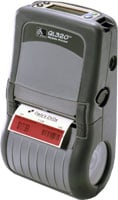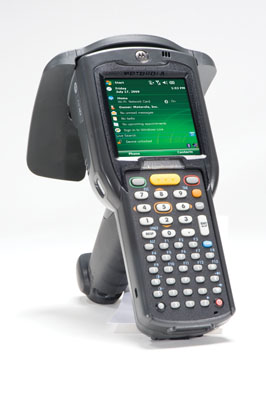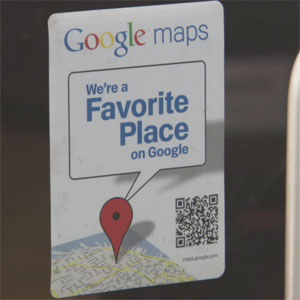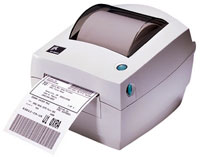Barcoding News
Data tracking news, product updates, tips, and more
The Nebraska Medical Center Saves Time, Improves Nurse Workflow
Challenge
On average, medication administration accounts for 26 to 32 percent of adult patient medication errors in hospitals, according to the Institute of Medicine. To reduce incidents, hospitals are increasingly moving toward bar code medication administration (BCMA) systems to electronically scan patient wristbands for positive patient identification to reduce preventable adverse drug events.
Before implementing BCMA, The Nebraska Medical Center manually created patient wristbands. The only means a nurse had to positively identify a patient was to verbally confirm the patient’s name and date of birth, and visually compare their responses to the information printed on the wristband. For incoherent patients (critical care, infants, etc.) this manual validation was not even possible, increasing the risk for a preventable adverse drug event to occur.
The hospital realized that BCMA could add a layer of patient safety by leveraging technology to verify and validate patient-specific information. But in order to fully leverage the BCMA system, The Nebraska Medical Center needed a printing solution that could simultaneously produce both two-dimensional bar codes as well as linear bar codes—a capability that existing laser printers lacked. It also needed to print two bar code types on each band; one for positive patient ID and the other to facilitate glucometer device readings.
Solution
With the BCMA go-live date soon approaching, the hospital had to select and implement new printers quickly. Considering the hospital’s two-dimensional requirements, they went with Zebra Technologies.
Shoe Zone’s Feat of Logistics
 Hands-free scanning technology has helped to double output for a leading UK shoe retailer, Shoe Zone. Its warehouse now handles 1,000,000 pairs of footwear per week and delivers to the company’s 400 shoe stores in the UK and Republic of Ireland.
Hands-free scanning technology has helped to double output for a leading UK shoe retailer, Shoe Zone. Its warehouse now handles 1,000,000 pairs of footwear per week and delivers to the company’s 400 shoe stores in the UK and Republic of Ireland.
Challenge:
• Lengthy manual data-entry process of product codes for warehouse stock items
• Heavy reliance on printed packing lists which can get lost
• Short implementation time
Solution:
• Equipping warehouse workers with a mobile solution
• Zebra mobile QL 320 bar code printers (for printing labels on demand for each filled warehouse carton)
• Motorola wrist-mounted computer and ring scanner
• All scanners, computers and printers link to Shoe Zone’s host system
• The scanning software is integrated in real time to the company’s stock- replenishment system
“Simple Choice Solution” Complete Point of Sale System from Aldelo and Logic Controls
Logic Controls and Aldelo have collaborated to create a complete POS system, preloaded software-hardware bundle, called, “Simple Choice Solution”
“The offering supplied by these two top companies is in my opinion the most reliable and suitable product for the channel,” said Nancy Szczudlik, Distribution Channel Manager at Logic Controls. “The ease of sale combined with the support and commitment of these partners is by far the best I’ve seen in the industry.”
The Simple Choice Solution offers two different hardware configurations an All-in-One POS terminal or a PC-based version.
Option A
LogicTouch includes the top-line Logic Controls All-in-One terminal, LogicTouch, and the most reliable thermal printer from Logic Controls. LogicTouch, known for its high reliability and exceptional performance, has incorporated with 1GHz Celeron-M CPU, 1GB RAM and 80GB HDD. It is equipped with ELO touch screen technology and a built-in MSR for its maximum functionality. Windows XP Pro is included.
Option B
PC-based option comes with the model LC8200 ¡V fan-less and vent-less retail-hardened computer. The small footprint and the rugged die-cast housing provide the flexibility and the reliability needed for restaurant operations. It is the perfect choice for use in the high demand often times harsh hospitality environment. The LC8200 is configured with 1GHz Celeron-M CPU, 1GB RAM, and 80GB HDD. Also included are the 15¡¨ super-value touch screen, the mini magnetic stripe reader, and the USB thermal printer. Microsoft WePOS is included.
The Simple Choice Solution will arrive ready to operate. Both Simple Choice Solution configurations come with Aldelo For Restaurants Lite Edition software preloaded and included in the price. The Lite Edition is the ideal POS software for quick service restaurants. Aldelo’s hospitality solution has been well received in over 40,000 installations around the world due to its flexibility, ease of use and completeness. The Aldelo Lite software can be registered via phone, mail, or the internet, and can be upgraded to the Aldelo For Restaurants Pro Edition at a later date.
Pharmaceutical Distributor solves communication Breakdown with Bar codes
The Challenge
Errors in pharmaceutical reordering are documented sources of negligence in the healthcare industry and can lead to patient endangerment and malpractice suits for healthcare facilities, physicians, and pharmaceutical companies. Despite this reality, many healthcare environments still use a traditional reordering system. Traditional reordering occurs when a nurse discovers a patient’s medication is below a specific level, pulls off the reorder sticker and then faxes the sticker to a pharmacy. These stickers not only ‘gum up’ the customer’s fax machine, but transmit unclear information to the Medicine Centre’s pharmaceutical staff.
The inherent problems of using this traditional method are clear; not only are there substantial opportunities for data capture and transmission errors, but an inefficient use of valuable resources. According to Justin Funk, the Medicine Centre’s Vice President of Information Technology, “We wanted a solution to completely eliminate opportunities for error and to save customers time on the ordering process by reducing inefficiencies on both ends that come from a traditional reordering system.â€
The Solution
Funk determined that a wireless bar code system and a tailored software application in concert would facilitate a quick, error-free reordering process. In order to be successful, the Medicine Centre needed to find a barcode scanner that met the following criteria:
- Cordless with long range capabilities
- Highly durable and capable of surviving drops to floor surfaces
- Reliable and intuitive for any nurse to use
- Centralized, 99.9% up time (regardless of power and internet outages)
Motorola Introduces MC3090-Z: Ergonomic, High-performance Handheld RFID Reader
 New MC3090-Z dramatically improves item-level RFID operations, asset management and tracking in scan-intensive environments
New MC3090-Z dramatically improves item-level RFID operations, asset management and tracking in scan-intensive environments
Motorola, Inc. today introduced a new handheld reader, expanding its business-class portfolio of radio-frequency identification (RFID) reader solutions and complementing its existing industrial line of products. The Motorola MC3090-Z is the lightest high-performance handheld reader in its class – leveraging the ergonomic and rugged design of the category-leading MC3000 and incorporating the industry’s first dual-axis antenna for versatile use in retail, healthcare and business environments. The new MC3090-Z broadens Motorola’s portfolio of RFID solutions to allow enterprise customers to deploy the right products to get the job done.
“Given the level of user activity around RFID today – particularly in high-growth application segments such as item-level traceability in retail and asset management – interest in handheld passive UHF readers is at its highest peak and continues to climb,†said Michael Liard, RFID practice director at ABI Research. “Motorola’s new MC3090-Z RFID handheld comes to market at an important time, as with more users evaluating RFID in myriad markets, new requirements are emerging that must be addressed, especially when it comes to handheld reader flexibility, form and function.â€
Google Helps Make the Physical World Searchable With Barcodes
 As part of a Favorite Places initiative Google has sent out 100,000 QR code window decals to popular restaurants, stores and attractions throughout the United States.
As part of a Favorite Places initiative Google has sent out 100,000 QR code window decals to popular restaurants, stores and attractions throughout the United States.
If you scan the barcode using barcode scanner software for your mobile phone, you will be take to a page containing more information about the location.
Could this be what it takes to get QR Codes to catch on in the US the same way they have in Japan?
6 Illinois Counties Expedite Traffic Stops with Fast, Streamlined Ticket Printing
Challenge
No one enjoys getting a traffic ticket. But at least the experience should be as quick and painless as possible for officers, citizens and administrative staff.
That’s the driving force behind an initiative in six greater Chicago area counties. Circuit court clerks from the counties of Kane, Will, DuPage, McHenry, Cook and DeKalb are switching to electronic citation systems to nearly eliminate data entry throughout the public safety and court systems.
As the counties move from traditional handwritten tickets to generating tickets from mobile laptops, they need a way to print tickets legibly and without consuming too much space in squad cars. When one county tried an impact printer with pre-printed forms, the units required too much cab space and were nearly impossible to load straight, making them print illegibly.
“The biggest complaint with the old printers was that they were constantly jamming or printed in the wrong spaces,†said Tim Bosshart, Commander, Carpentersville Police Department.
Solution
In order to address these concerns, Kane County has turned to Zebra Technologies. For the citation software, the counties use QuickTicket from APS. With it, officers issue citations via laptops, auto-populating an electronic version of the state’s citation form. They can obtain data from motor vehicle queries, or from a swipe or scan of the offender’s driver’s license.
That system reduces the time for officers to issue citations and eliminates the need for law enforcement to re-key data back at their office—replacing a time-consuming, error-prone process.
A slice of Auto ID corrects Wholesale Grocer’s Inventory challenge
The Challenge
Heiderbeck was using an outdated data collection system to track and update thousands of products in its inventory. Heiderbeck specifically used a manual recording system, in which warehouse employees would print out inventory lists, make hand-written adjustments and then give the lists to other employees for updating purposes.
Without a modern automatic identification system, Heiderbeck was vulnerable to errors and data inaccuracies. After the merger between the two companies Heider and Beck, Heiderbeck decided it was time to invest in an efficient inventory tracking solution. They found the answer in an automatic identification system, which utilizes bar code scanners and customized software for product tracking.
The Solution
By choosing an automatic identification system, Heiderbeck would be equipped to facilitate a real-time inventory record, be able to write off spoiled and damaged goods and create more operational efficiencies. Automatic identification also produces a very low error rate and ensures data is available at all times, which is especially important in monitoring and updating ‘date sensitive’ product inventories.
Raising the bar for positive patient identification
 The Challenge
The Challenge
The concept of ‘positive patient identification’ is much talked-about in the medical world, and is a fundamental requirement for correct patient care. This phrase covers all types of verification and identification practices which effect patients, hospitals and procedures. Using patient ID wristbands goes a long way to ensure the correct drugs are assigned to the correct patient – as hand- written wristbands can be misread, easily damaged or even lost.
Previously ward nurses would have to hand write all patient wristbands using information from the patients medical history. By eliminating this manual process, the hospital would save time for medical staff, allowing them to focus on other aspects of their jobs.
It was also important that the key patient demographics were taken from the hospital information system to avoid the risk of transcription errors.
Effective barcodes
According to Helena Roddy, Haemovigilance Officer, Portiuncula Hospital: “We wanted to implement a blood tracking system to assist with compliance to the EU Blood Directive. The first step in this process was to introduce barcoded patient identification wristbands.â€
“Implementation and support were also key†Roddy continued. â€We needed a solution which required minimal maintenance and expense.â€
The hospital chose a Zebra solution of printers and wristbands for use with all its adult patients and installed six LP 2844Z printers throughout the hospital as well as working with hospital staff to design the wristband. This design was key to its success, and had to contain the patient’s name, date of birth, sex, and hospital number.
Honeywell and Sydion Announce Solution for Mobile H1N1 Vaccine Administration
 Honeywell’s Dolphin® 9900 and Sydion’s emergency management technology provide efficient H1N1 vaccination
Honeywell’s Dolphin® 9900 and Sydion’s emergency management technology provide efficient H1N1 vaccination
Honeywell today announced that Sydion, LCC, a mobile crisis management technology company, is offering its’ patient-tracking software on Honeywell’s mobility platform to assist in the administration of the H1N1 vaccine. The system that Sydion is offering bundles Honeywell’s Dolphin® 9900 mobile computers into Sydion’s eMET®, an emergency patient tracking system, to deliver a complete offering that enables healthcare providers to effectively prepare for and manage mass H1N1 vaccine administration at locations such as hospitals, vaccination clinics or schools. Recently made available to the public, the H1N1 vaccine is in extremely high demand due to several outbreaks of the H1N1 flu, commonly known as the “swine flu.†The mobile tracking system offered by Sydion enables healthcare facilities and public health agencies to address the public need by offering a system to track, monitor and administer available vaccines either remotely or on-site.
With eMET®, patients are provided with a bar-coded wrist band or other form of identification that includes vital information which is used to create an electronic medical record. The patient ID is entered into the eMET® central database, creating a way for medical personnel to track and prioritize all patients, based on individual needs. The system automatically transmits all patient data scanned or entered into the mobile computer to the patient’s record in the eMET® database, ensuring that physicians have up-to-date information and can follow up with the patient as needed.




